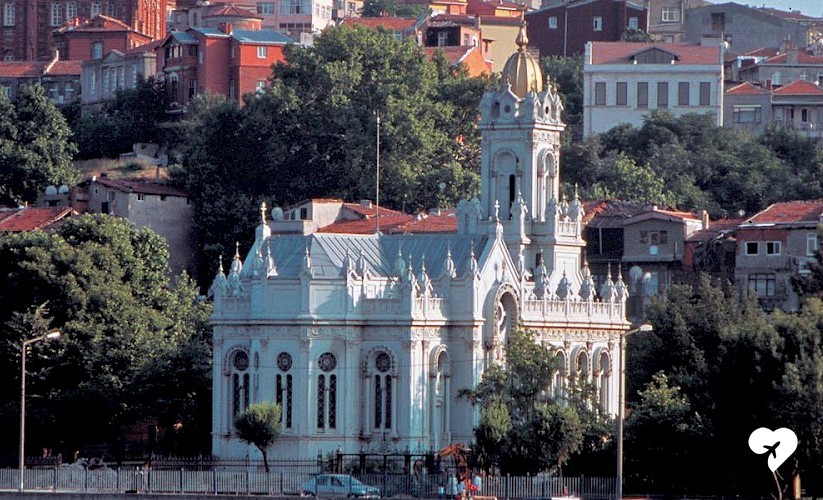Balat is one of the oldest and most spectacular districts of Istanbul. The second you step foot along its narrow cobbled streets and historic buildings, you sense an atmosphere unlike anywhere else in Istanbul, and indeed the world.
The district is genuinely hidden away a little bit, set past the shores of Eminönü along the Golden Horn. It’s quite close to the metro stop along the Golden Horn (called Haliç in Turkish), within comfortable walking distance. The coastal road all along the Golden Horn is extremely pleasant, with massive parks all along and families walking along the promenade all the way up to Pierre Loti at the end of the Golden Horn.
But once you step inside Balat, all that drifts away as you’ve stepped into an Istanbul of yester year. So let’s go exploring!
Balat’s Colorful Homes

Perhaps the most iconic part of Balat is the district’s colorful houses along sloping cobbled streets. These homes are mostly over 50-years-old, and in some cases are up to 200-years-old. These historic wooden homes are amongst the most photographed buildings in the city, and given its popularity many of these streets now feature cafés and restaurants for you to stop off at and admire the setting.
Or if you want a break (because remember, most of these streets are QUITE steep!), just sit on the steps of these homes, as people have been taking a break on that same stoop for literally centuries!

The neighborhood itself is incredible welcoming, with many family having lived here for generations. You’ll meet locals who are very happy to talk to you and ask you about your background, and as we’ll see… many of the locals have quite the diverse background themselves!
The Diverse History of Balat

Balat is a district that has traditionally been home to minorities in the city, with many Jewish families and Greek Orthodox families making it their homes. The stunning massive Fener Greek High School is still in operation here and you can see it from many different angles all over. Along the coast is a Bulgarian church, with iron castings manufactured in Vienna and a belfry tower that was a gift from Russia.
You’ll see tons of churches and even a synagogue in the neighborhood – the Yanbol Synagogue built by Bulgarian immigrants - and the residents match this with many famous Turks having lived here as well as a Moldavia and Wallachia prince and other dignitaries. The Vaftizci Yahya Church is one of the most unique churches in the world, built during the Ottoman period and based on a monastery Sultan Selim I saw during his conquest of Egypt.
In short, this district is one of the city’s most diverse and its historic buildings and residents give you this sense the second you walk through it.
Food and Shopping

Finally, the diversity of the district has bled into the food options available, and the cafés and restaurants are truly spectacular. It’s the kind of district where you can’t really go wrong – turn a corner and you’re walking past one of the oldest cafés in the city, turn another and you’ve got the city’s oldest meyhane, a type of traditional dinner spot.
.jpg)
The markets along the winding cobbled streets are famous throughout the city for selling traditional wares and fresh produce, and just the ambiance of the district is enough to make a stroll through the markets worth it. You won’t find any big brand names in Balat, but you’ll find things the likes of which you can find anywhere else in the world.
